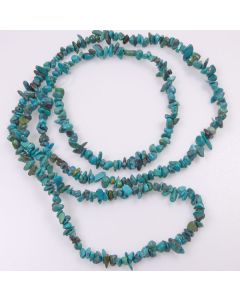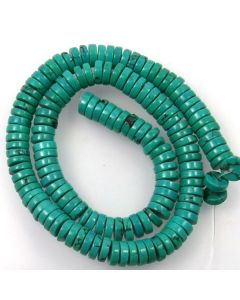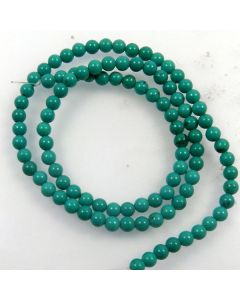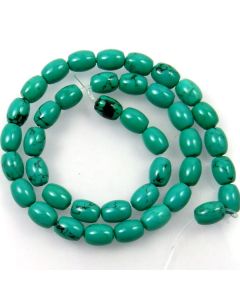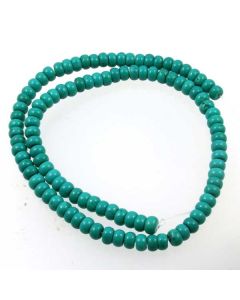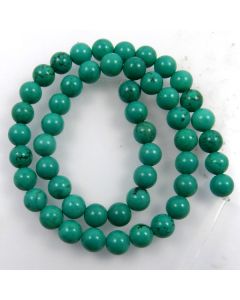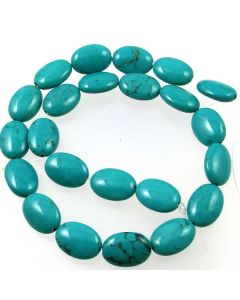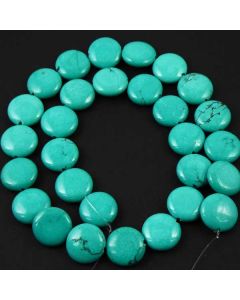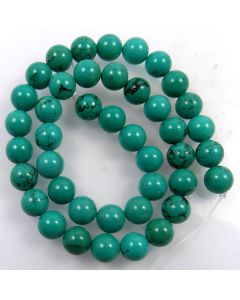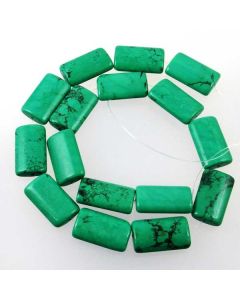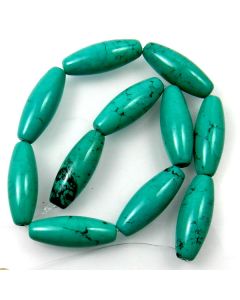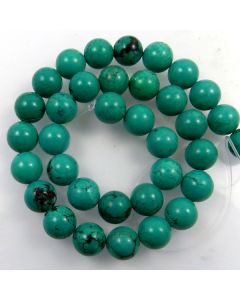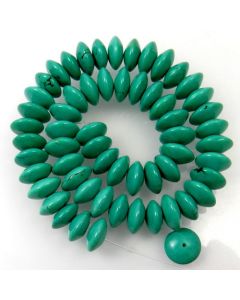Turquoise Natural
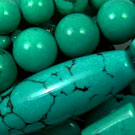
Legend - It’s name means “Turkish Stone” and comes from European markets in the Middle Ages, who received it from Turkish traders who brought it from Persia. It was used for beads by the Egyptians as early as 5500bc and has been used in amulets in Europe and Asia for thousands of years and is important in Native American jewellery. The Navajo and Hopi in Arizona value Turquoise as an attractor of prosperity and fertility of the soil and treasure it as a powerful success and good luck stone.
Properties - Supposed to be a stone of communication, making one more eloquent, loving, creative and honest. Also considered a stone of friendship.
Description - These beads are natural Turquoise which has been stabilised, blue through to sea green, with included matrix creating “spiderweb” patterning. Sold as temporary strung 40cm (approx) strands.
There are five kinds of turquoise on the market:
1) NATURAL TURQUOISE. So hard and beautiful that it is simply mined, cut and polished. Less than 3% of all turquoise on the market worldwide is natural.
2) STABILISED TURQUOISE. Softer natural Turquoise infused under pressure with a clear epoxy resin which permanently hardens the rock. Most of the Turquoise on the market is stabilised.
3) RECONSTITUTED. Lower grade Turquoise is ground into powder, saturated with epoxy resin, dyed and compressed into blocks for cutting.
4) OTHER STONE - DYED. Alternative stones (like Howlite) are dyed to look like Turquoise. Colours tend to look artificial.
5) IMITATION. Plastic or glass which has been dyed to look like turquoise.
-
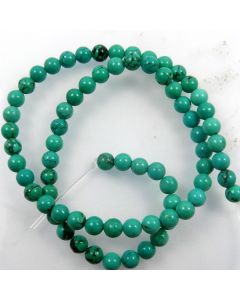
-
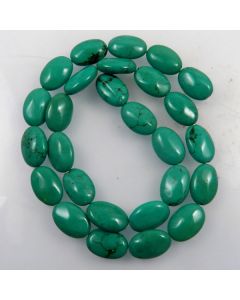 Hubei Province Turquoise (Stabilised) 10x14x6mm Oval BeadsSpecial Price £7.61 Regular Price £8.18
Hubei Province Turquoise (Stabilised) 10x14x6mm Oval BeadsSpecial Price £7.61 Regular Price £8.18 -
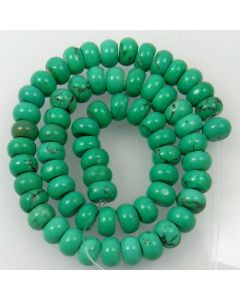 Hubei Province Turquoise (Stabilised) 10x6mm Rondelle BeadsSpecial Price £10.74 Regular Price £12.89
Hubei Province Turquoise (Stabilised) 10x6mm Rondelle BeadsSpecial Price £10.74 Regular Price £12.89

